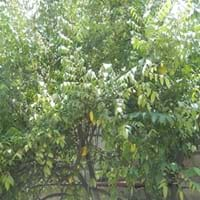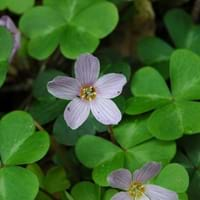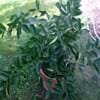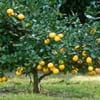Life Span
Perennial
Perennial
Origin
Southeastern Asia
Western United States, Canada
Types
Not Available
not available
Habitat
Subtropical climates, Tropical regions
Moist woods, Redwood forests
USDA Hardiness Zone
10-14
7-9
Sunset Zone
H1, H2, 22, 23, 24
4, 5, 6, 7, 8, 9, 14, 15, 16, 17, 18, 19, 20, 21, 22, 23, 24
Habit
Arching/Fountain-shaped
Spreading
Flower Color
Pink, Rose, Violet
White, Purple, Pink, Lavender
Flower Color Modifier
Bicolor
Bicolor
Fruit Color
Yellow, Orange, Light Yellow, Lemon yellow, Yellow green, Gold
Not Available
Leaf Color in Spring
Green
Green
Leaf Color in Summer
Green
Green
Leaf Color in Fall
Green
Green
Leaf Color in Winter
Light Green
Light Green
Leaf Shape
Oblovate
Heart-shaped
Plant Season
Spring, Summer, Fall
Spring, Summer, Fall, Winter
Sunlight
Full Sun, Partial Sun
Partial Sun, Partial shade, Full Shade
Growth Rate
Slow
Very Fast
Type of Soil
Loam, Sand
Loam
The pH of Soil
Acidic, Neutral
Acidic, Neutral
Soil Drainage
Average
Average
Bloom Time
Early Spring, Spring, Late Spring, Early Summer, Summer, Late Summer
Early Spring, Spring, Late Spring, Early Summer, Summer, Late Summer, Early Fall, Fall
Where to Plant?
Ground
Container, Ground, Pot
How to Plant?
Seedlings, Stem Planting
Divison, Seedlings
Plant Maintenance
Low
Low
Watering Requirements
Average Water Needs, Requires watering in the growing season
Average Water Needs, Medium
In Summer
Lots of watering
Ample Water
In Spring
Moderate
Adequately
In Winter
Average Water
Moderate
Soil pH
Acidic, Neutral
Acidic, Neutral
Soil Type
Loam, Sand
Loam
Soil Drainage Capacity
Average
Average
Sun Exposure
Full Sun, Partial Sun
Partial Sun, Partial shade, Full Shade
Pruning
Prune in winter, Remove damaged leaves, Remove dead leaves
Remove damaged leaves, Remove dead branches, Remove dead leaves
Fertilizers
Fertilize every year
All-Purpose Liquid Fertilizer
Pests and Diseases
Red blotch
Red blotch
Plant Tolerance
Drought
Drought
Flower Petal Number
Single
Single
Foliage Texture
Medium
Medium
Foliage Sheen
Glossy
Matte
Attracts
Birds, Butterflies
Not Available
Allergy
Kidney Stone
Not Available
Aesthetic Uses
Not Used For Aesthetic Purpose
Ground Cover
Beauty Benefits
Not Available
Not Available
Environmental Uses
Air purification, Food for birds, Food for insects, Nesting sites for birds, Prevent Soil Erosion
Air purification, Provides ground cover
Medicinal Uses
Anti-oxidant, Antioxidants, High blood pressure, Nutrients
Antirheumatic, Boils, Opthalmic, Rheumatism, Sore Eyes, Swelling
Part of Plant Used
Fruits, Seeds
Flowers, Leaves
Other Uses
Oil is used in perfume, soaps, creams, etc., Used As Food, Used for its medicinal properties
Culinary use, Employed in herbal medicine, Used As Food, Used for fragrance
Used As Indoor Plant
No
No
Used As Outdoor Plant
Yes
Yes
Garden Design
Edible, Fruit / Fruit Tree, Tropical
Groundcover, Wildflower
Botanical Name
AVERRHOA carambola
OXALIS oregana
Common Name
Carambola, Starfruit
Redwood Sorrel
In Hindi
carambola पेड़
Redwood Sorrel
In German
Sternfrucht Baum
Redwood Sorrel
In French
arbre carambole
Redwood Sorrel
In Spanish
árbol de carambola
Redwood alazán
In Greek
carambola δέντρο
Redwood Sorrel
In Portuguese
árvore de carambola
Redwood Sorrel
In Polish
karambola drzewo
Redwood szczaw
In Latin
carambola ligno
Rumex Redwood
Phylum
Tracheophyta
Magnoliophyta
Class
Magnoliopsida
Magnoliopsida
Order
Oxalidales
Geraniales
Family
Oxalidaceae
Oxalidaceae
Clade
Angiosperms, Eudicots, Rosids
Angiosperms, Eudicots, Rosids
Tribe
Not Available
Not Available
Subfamily
Not Available
Not Available
Number of Species
Not Available
Importance of Carambola and Redwood Sorrel
Want to have the most appropriate plant for your garden? You might want to know the importance of Carambola and Redwood Sorrel. Basically, these two plants vary in many aspects. Compare Carambola and Redwood Sorrel as they differ in many characteristics such as their life, care, benefits, facts, etc. Every gardener must at least have the slightest clue about the plants he wants to plant in his garden. Compare their benefits, which differ in many ways like facts and uses. The medicinal use of Carambola is Anti-oxidant, Antioxidants, High blood pressure and Nutrients whereas of Redwood Sorrel is Antirheumatic, Boils, Opthalmic, Rheumatism, Sore Eyes and Swelling. Carambola has beauty benefits as follows: Not Available while Redwood Sorrel has beauty benefits as follows: Not Available.
Compare Facts of Carambola vs Redwood Sorrel
How to choose the best garden plant for your garden depending upon its facts? Here garden plant comparison will help you to solve this query. Compare the facts of Carambola vs Redwood Sorrel and know which one to choose. As garden plants have benefits and other uses, allergy is also a major drawback of plants for some people. Allergic reactions of Carambola are Kidney Stone whereas of Redwood Sorrel have Not Available respectively. Having a fruit bearing plant in your garden can be a plus point of your garden. Carambola has showy fruits and Redwood Sorrel has no showy fruits. Also Carambola is not flowering and Redwood Sorrel is flowering. You can compare Carambola and Redwood Sorrel facts and facts of other plants too.





